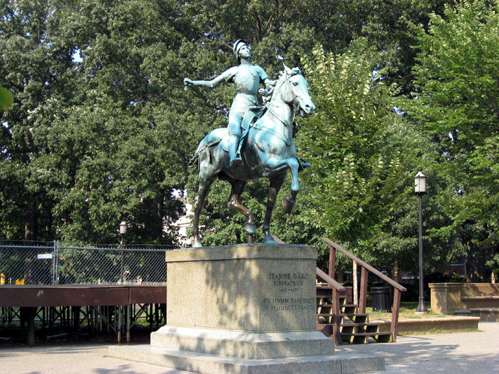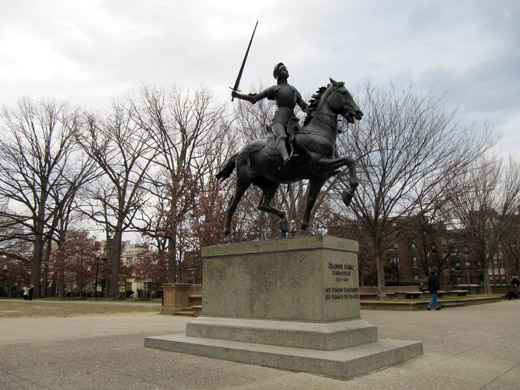Savannah is famous for its gorgeous and walkable squares. One in particular, Monterey Square, was the site of drama in Midnight in the Garden of Good and Evil—but when I tromped through the square during Christmas week, I was drawn instead to a Gothic Revival church…

…that’s not, in fact, a church. Behold: Temple Mickve Israel! Dedicated in 1878, it’s the third home of a congregation founded in 1733 when 41 Jewish colonists, most of them Sephardic, sailed to Georgia (where Catholicism was illegal, but Judaism wasn’t) with the support of Jews in London.

Last week, I heard a passing tour guide announce that the congregation chose the Gothic Revival style to honor the cathedrals of their Spanish and Portuguese hometowns. That claim is specious; this building was dedicated nearly 150 years after the colonists arrived. According to the docents, the 19th-century Jewish congregants, like their Christian neighbors, simply got caught up in the Gothic Revival craze. Boy, did they ever.
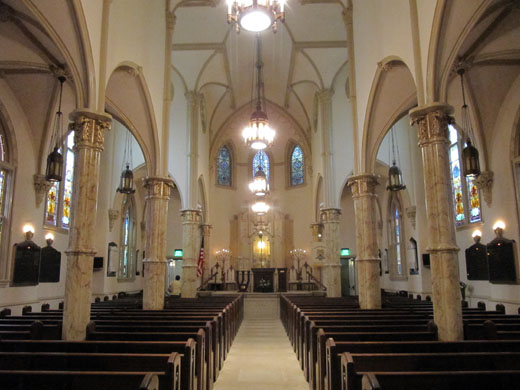
For a synagogue, Mickve Israel is a weirdly pure model of a neo-Gothic church. It was designed by English-born Henry G. Harrison, a renowned Episcopalian church architect and a disciple of Gothic Revival master A.W.N. Pugin. Harrison’s background shows: Mickve Israel has a basic cruciform shape with a nave and transept; pointed arches; stained-glass windows with tracery; quatrefoil designs everywhere; buttresses; pinnacles; and a castellated multi-story tower. The ark is also neo-Gothic, as are the chairs alongside it.
The big difference, of course, is the swapping-out of a steeple with what the authors of Synagogue Architecture in America call “a Middle Eastern element hinting at the true Jewish nature of the building.”

I’d say it does far more than hint. That cupola insists, with confidence and grace, “Our roots are European, the Gothic style is ours to use—but we’ll top it off with a sign of our deeper origins and our present difference.”
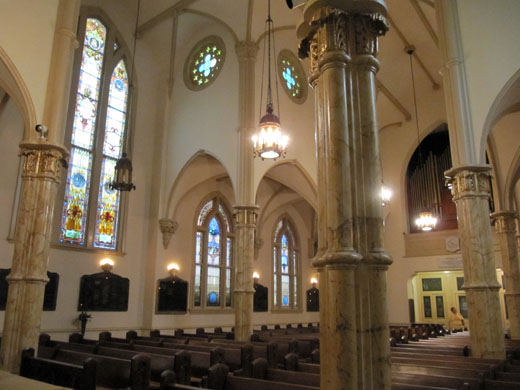
A surprising schmeer of myth adheres to this synagogue: that the Jewish congregation bought it from the local bishop; that it’s based on a specific Spanish or Portuguese cathedral; and that the choir loft was once segregated seating for women.
Those tales aren’t true—but it is true that while other Gothic Revival synagogues used to exist, and while others still standing can boast neo-Gothic doodads, Mickve Israel is (as far as I can tell) the only remaining full-on Gothic Revival synagogue in America.
Today, this 200-family congregation reveres its medievalist gem, a building that bravely (but not brashly) asserted that Judaism belonged in a Southern city in the 19th-century—and well beyond. In 1927, when a fire destroyed the tower, the people of Mickve Israel rebuilt it…
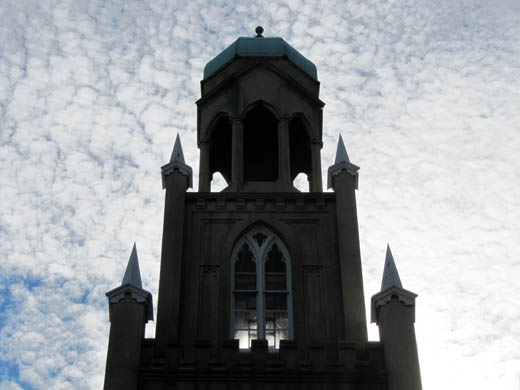
…just as it was, and probably always will be: Gothic reverie, Middle Eastern memory, persistent American dream.

















